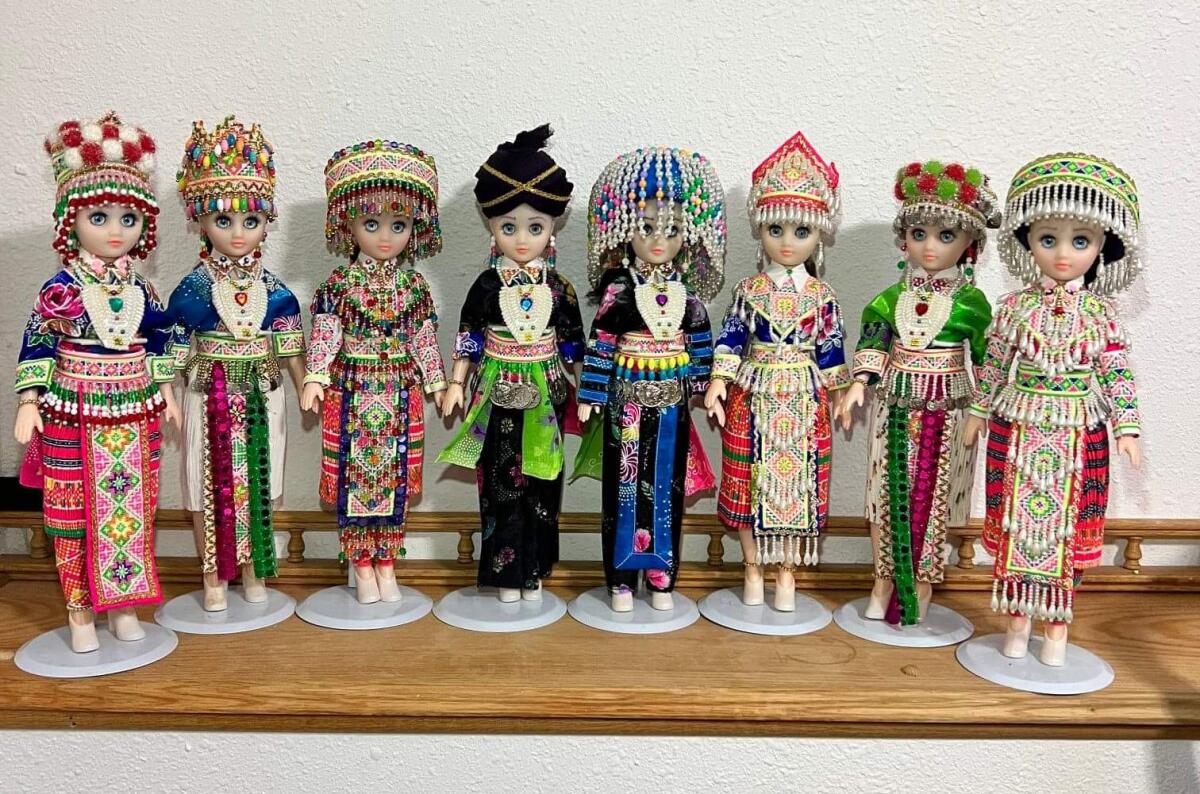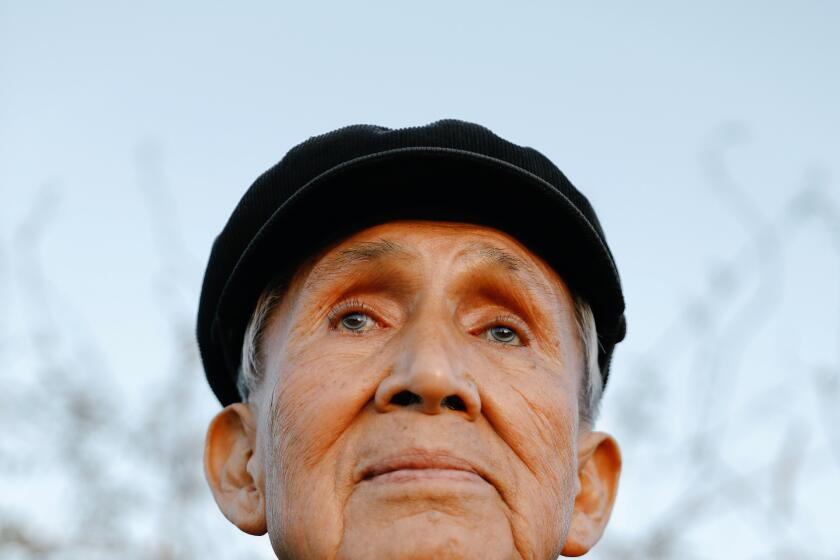Op-Ed: Losing our Hmong dolls led me to unearth a piece of my culture

When a fire burned my family’s house in Oroville in 2020 the dolls were a seemingly trivial loss in the larger scheme of what went up in smoke.
My family evacuated in time, but except for the few items we carried away with us, the flames took everything. I mourned the heavy loss of our Hmong cultural items and traditional garments — like the suitcase of clothes my pog (father’s mother) received more than half a century ago from her mother, but I became fixated on the loss of the dolls.
My mother had created roughly a dozen of them in the early 2000s, using leftover fabric and beads from sewing our traditional Hmong outfits to make smaller Hmong clothes for them. They’d lived on the top shelf of her closet, where they were protected from dust with clear plastic wrap. Occasionally, she displayed them in the living room for decor, not meant to be played with but to be admired for their beauty and embroidery.
They are a rare sight nowadays in the community. As they vanish from public eye, I worry that amid my people’s invisibility in history — fraught with war, persecution and displacement — their story will disappear too. Women’s contributions to Hmong culture, especially, can be overlooked.
For many years I, too, dismissed these dolls as just that — dolls. But after the fire I wanted to find out more about them — to recover some part of my heritage.
How new arrivals remade the east San Gabriel Valley — and assimilated in it.
I began with my mother, asking why she decided to make them. She recalled spotting them at a local Hmong New Year celebration in California and also at a relative’s house.
“I saw these beautiful dolls and liked them, so I just started making them too,” she told me. But I felt there had to be more to the role of these dolls than her casual answer let on.
I’d assumed doll making was part of a mother-daughter rite of passage, similar to learning paj ntaub (“flower cloth” or Hmong embroidery), but that was simply because I had only ever witnessed my mother making dolls. As I spoke to more people, I learned they had a more complex history.
One community member told me that people started making the dolls in the 1980s and ’90s as a source of income during the early waves of Hmong refugees entering the United States. One woman made them with her mother and sold them through the church that had sponsored their family in Wisconsin. Their dolls’ prices varied, often ranging between $40 and $150. Female dolls were more popular, but males were made, too.
But for many, the work wasn’t strictly for financial reasons. One woman shared that her mother dressed dolls in Hmong clothes because her daughters refused to wear them — an anecdote that would likely resonate with my own mother. My sisters and I had had our fair share of complaints about dressing up for Hmong New Year celebrations.
For one mother, inspired by a neighbor, she made about 50 dolls in the mid ’90s to capture traditional attire in a time when Hmong had so little representation in the U.S. Though some were given away, she saved most of the dolls for cultural preservation and as keepsakes — for her, they were too precious to sell.
To finish one doll, it could take several weeks, one person explained, though this ran counter to what my mother had said — that if you were dedicated, you could complete a doll in just a few days. But I wouldn’t know; by the time I was old enough to start learning, my mother didn’t have time to teach me as she had taught my older sisters, and I’d become too busy with schoolwork to learn.
I presented my mother with a photo of the doll she had given me. “Even sewing these tiny parts was quick and easy?” I asked, referring to the three striped patterns on the sleeves, representative of our Hmoob Txaij Npab (“Striped Arms Hmong”) traditional style.
My mother seemed taken aback. “I can’t recall,” she said. “It feels remarkable now that I was able to make these.”
Now that these dolls are vanishing, I think one reason may be that, like my mother, whose hands are no longer as nimble, the doll makers of yesteryear don’t have time or are not able to make them anymore. I suspect, also, that they are not as needed as before — there are less laborious ways of preserving and reproducing culture now. And when it comes to income, other sources of work have become more accessible; making dolls is no longer a financial necessity. To make them now, you need passion and devotion to the craft itself.
California’s movement to save its Indigenous languages began about 30 years ago. My childhood fascination with foreign languages led me to join it.
I don’t expect I’ll ever find a single place or person of origin behind the dolls. It is enough for now that my search has unearthed a richer history than I once thought. And, to my delight, my conversations with my mother unlocked a fond childhood memory for her: When she lived in Laos, she saw older girls who played with dolls cobbled together from scrapped fabric, bamboo and sticks, seemingly early iterations of the dolls I’d come to know. When my mother saw the dolls at the New Year‘s celebration all those years ago, she remembered.
Even after her mother, my niam tais, couldn’t corroborate whether those makeshift dolls existed or not, my mother insisted: “It was such a distinct memory.”
Investigating the dolls uncovered intertwined narratives that I had not considered before: my people’s plight and diaspora, the labor and creativity of Hmong women, the preservation of a culture and the love for dolls and make-believe.
And the dolls gave me something the fire couldn’t take away: a reminder of how, amid despair and loss, our history and traditions can survive through the act of remembering.
Jer Xiong is the editorial assistant at Zócalo Public Square. This article was produced in partnership with Zócalo Public Square.
More to Read
A cure for the common opinion
Get thought-provoking perspectives with our weekly newsletter.
You may occasionally receive promotional content from the Los Angeles Times.












